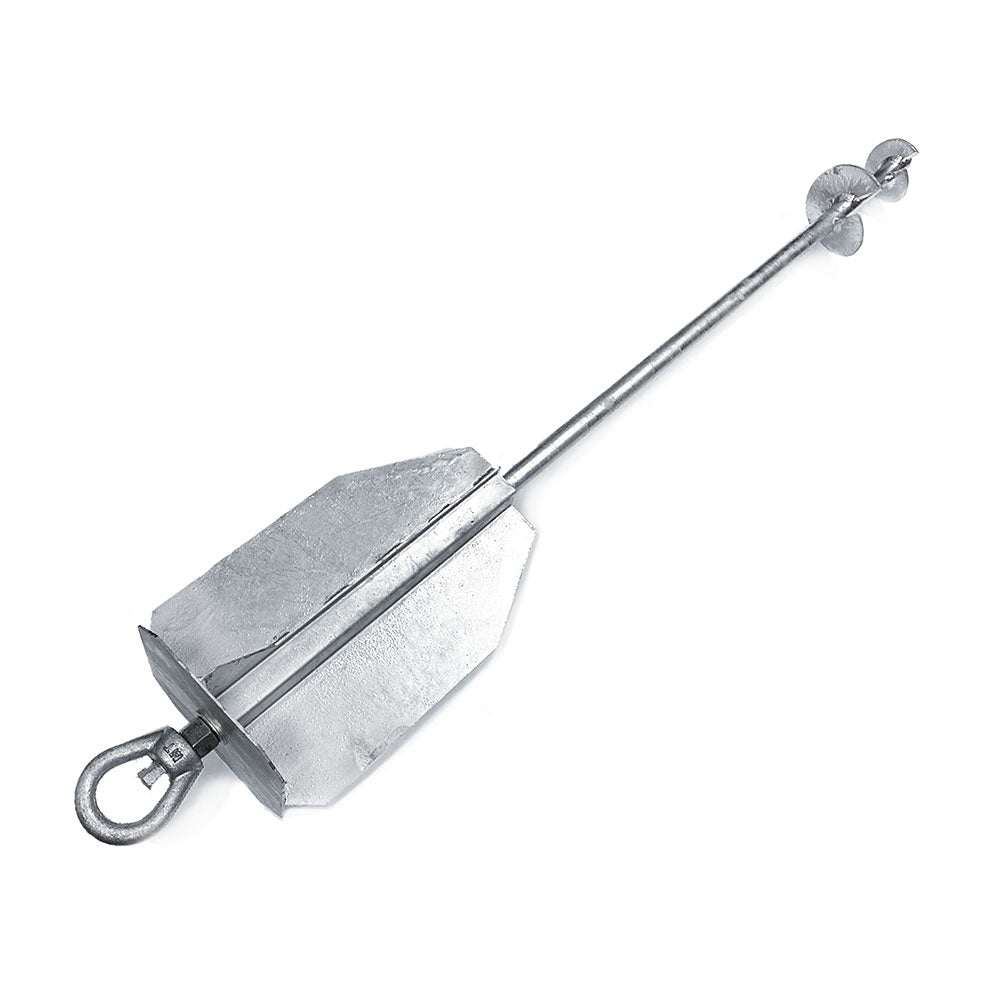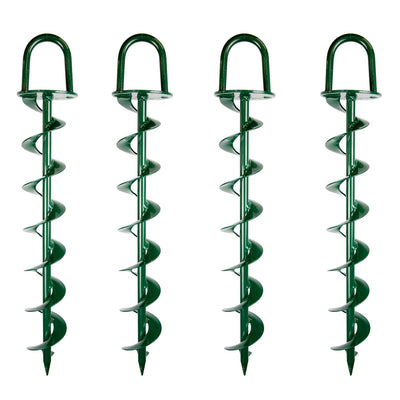How to Choose the Best Ground Anchor for Industrial Use
How to Choose the Best Ground Anchor for Industrial Use
Blog Article
Explore the Various Kinds of Ground Support for Your Following Project
When starting a building and construction or landscaping job, comprehending the different sorts of ground supports available is essential to making certain both stability and toughness (Ground Anchor). From auger anchors, which master diverse dirt problems, to stake supports made for temporary installments, the options are countless. Additionally, concrete and screw supports existing one-of-a-kind benefits in specific situations, while deadman anchors are tailored for applications calling for resistance to lateral pressures. The selection of an appropriate support kind can dramatically influence the general success of your project, prompting further exploration right into their respective benefits and applications.

Auger Anchors
Auger supports are a prominent choice in different building and landscaping jobs as a result of their distinct design and effective anchoring abilities. These supports are composed of a helical screw-like shaft that is driven into the ground, enabling a protected and steady hold. The spiral design helps with easy installation and makes best use of resistance against side pressures, making auger anchors specifically effective in applications such as fence, temporary structures, and erosion control.
The installment process of auger anchors is reasonably simple. They can be by hand or mechanically mounted, relying on the size and called for depth. This flexibility permits for their usage in diverse dirt conditions, from sandy to clayey terrains. Moreover, auger supports can be quickly removed and reused, which includes in their cost-effectiveness and sustainability.
One of the substantial advantages of auger supports is their ability to distribute lots evenly throughout the bordering dirt, reducing the threat of dirt disturbance and lessening ecological influence. Additionally, they are less susceptible to heaving or loosening up gradually contrasted to typical securing techniques. As a result, auger supports are an outstanding option for tasks needing resilient and trusted anchoring services.

Stake Anchors
When it pertains to protecting structures in a selection of exterior applications, risk supports provide a straightforward and dependable option. These supports are usually built from resilient materials such as steel or light weight aluminum, made to endure ecological tensions while offering optimum security. Their basic design enables for fast installation, making them a suitable option for short-term or permanent anchoring needs.
Stake supports are particularly helpful in safeguarding camping tents, covers, and other lightweight structures against wind and climate. They operate by being driven right into the ground at an angle, creating a solid hold that stands up to pull-out forces - Ground Anchor. The efficiency of risk supports depends upon a number of variables, including dirt kind, wetness material, and the angle of setup
For included safety and security, several stake supports include add-on points for ropes or straps, allowing for tension modifications as essential. In applications such as landscaping or building, they can effectively maintain tools or frameworks on irregular surface. Overall, stake supports offer a cost-efficient and versatile service for protecting various exterior setups, making them a recommended option for professionals and DIY enthusiasts alike.
Concrete Anchors
Concrete anchors provide a robust service for protecting frameworks to concrete surfaces, making certain stability and safety and security in different applications. These anchors are essential for tasks ranging from domestic buildings to large commercial installations. They can be found in different types, consisting of growth anchors, glue anchors, and undercut supports, each developed for particular load needs and ecological problems.
Sticky supports utilize high-strength epoxy or material to bond the anchor to the concrete, providing exceptional load-bearing capacities, especially in split concrete situations. Undercut anchors develop a distinct form within the concrete, offering outstanding holding power, especially in applications where tensile tons are common.
Choosing the appropriate concrete anchor entails taking into consideration factors such as the weight of the load, the condition of the concrete, and environmental problems. Correct installment methods are vital to make sure ideal performance and integrity. When implemented appropriately, concrete anchors considerably boost the architectural honesty of various projects, making them vital in modern building and construction methods. Understanding the specific needs of your job will certainly help in picking the appropriate kind of concrete anchor for the job.
Screw Anchors

Screw anchors are a functional securing remedy that can be effectively used in a range of applications where typical concrete supports may not be sufficient. These anchors include a helical layout that enables them to be easily driven right into the ground, making them perfect for use in dirt and various other substratums. Their one-of-a-kind framework provides excellent holding power and resistance to pull-out pressures, making them ideal for numerous tasks, from landscape design to structural support.
Among the key advantages of screw supports is their ease of installation. They require minimal equipment and can frequently be installed without the need for excavation, which saves both time and labor costs. In addition, screw anchors can be removed and reused, supplying a lasting option for short-lived applications.
Screw supports are specifically beneficial in locations where dirt problems are challenging, such as sandy or loose dirts. Their capacity to be installed at varying depths enables for personalization based on particular job requirements. On the whole, screw supports provide a effective and trusted anchoring method, making them an exceptional selection for engineers and specialists seeking efficient remedies for their tasks.
Deadman Anchors
Deadman supports serve as a robust service for maintaining frameworks in challenging problems, specifically where typical securing methods may fall short. These supports contain big, hefty items hidden underground, which produce resistance versus lateral forces. The style usually involves a horizontal component, such as a block of concrete or a metal plate, buried in the dirt, to which cables or bands are affixed.
The efficiency of deadman supports hinges on their capability to distribute loads over a bigger area, minimizing the threat of failing in unsteady dirt problems. They are particularly beneficial in applications such as keeping walls, short-term frameworks, and incline stablizing, where soil motion can jeopardize the stability of Learn More the framework.
Installment of deadman supports requires mindful preparation to guarantee they are put at the appropriate deepness and orientation, optimizing their load-bearing capacity. While they may require more labor and product than light-weight anchors, their integrity in damaging conditions makes them invaluable for long-lasting projects. Moreover, deadman anchors are flexible and can be adapted to different applications, making them a best selection for designers facing one-of-a-kind obstacles in their tasks.
Verdict
Auger supports stand out in varied dirt problems, while risk anchors fit momentary applications. For concrete surface areas, development and sticky supports offer reliable options, and screw supports supply versatility in challenging terrains.
Additionally, concrete and screw supports present one-of-a-kind advantages in particular situations, while deadman supports are customized for applications requiring resistance to side forces - Ground Anchor.Auger anchors are a popular selection in various building and landscape design tasks due to their unique style and effective anchoring abilities. They come in different kinds, including development anchors, adhesive supports, and undercut anchors, each created for details load needs and ecological conditions
Adhesive anchors use high-strength epoxy or material to bond the anchor to the concrete, providing remarkable load-bearing abilities, particularly in broken concrete situations. Overall, screw other supports supply a reliable and reliable securing approach, making them an exceptional choice for designers and contractors check out this site seeking efficient services for their tasks.
Report this page